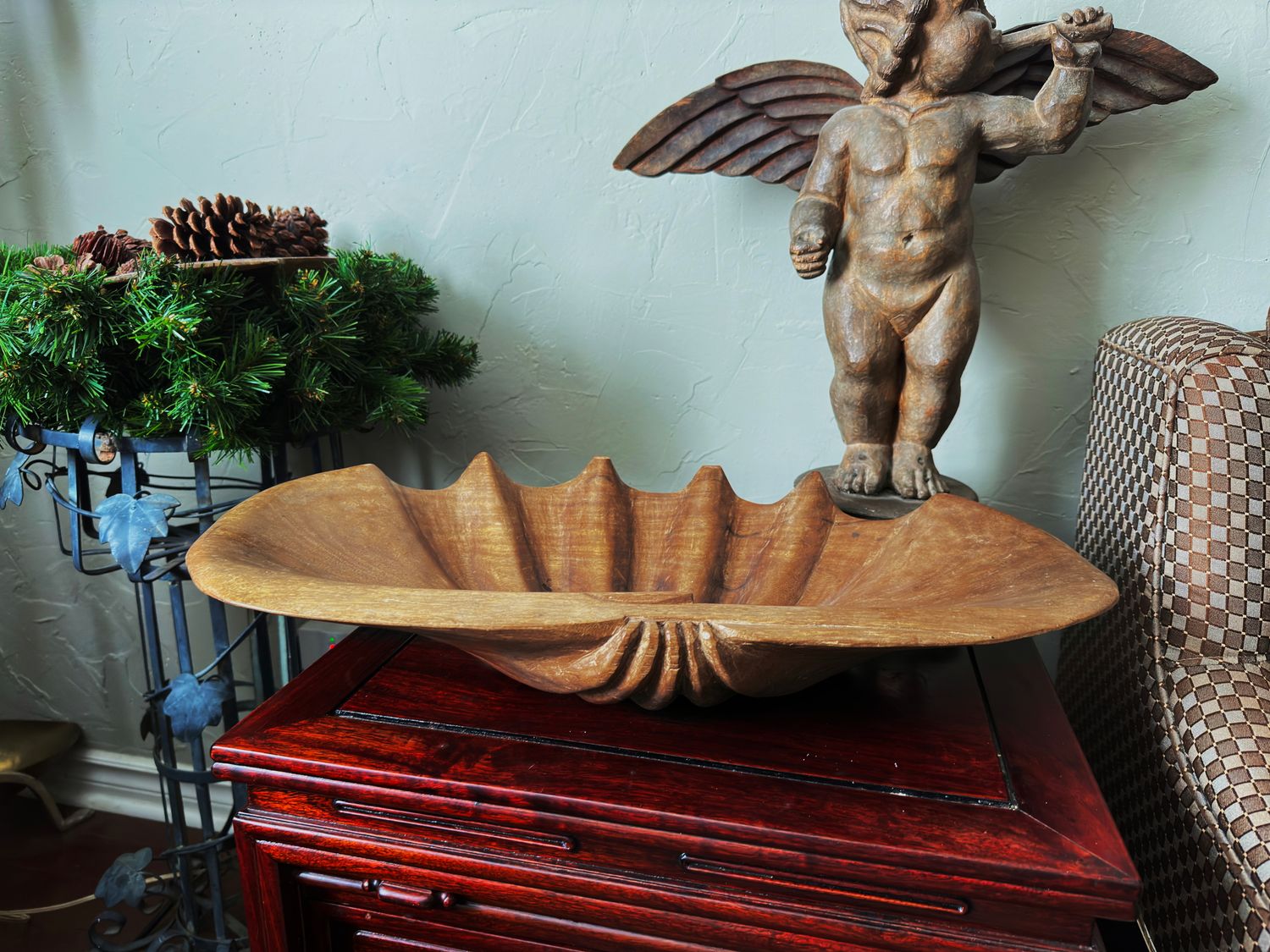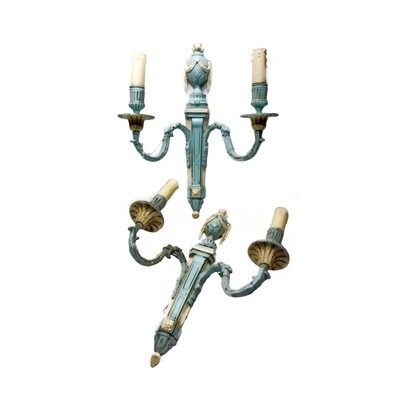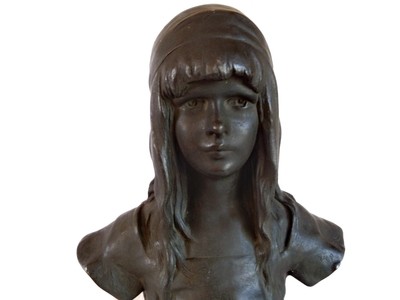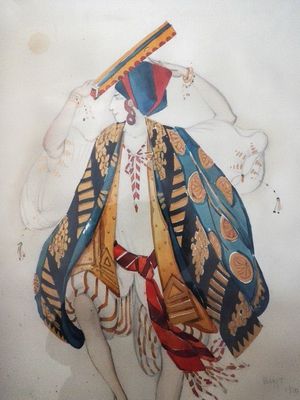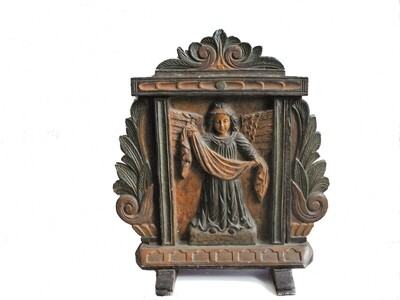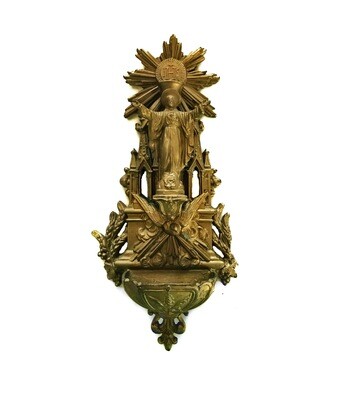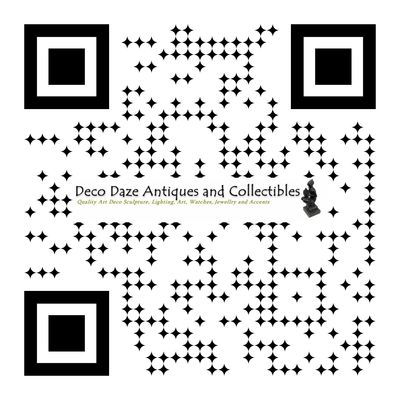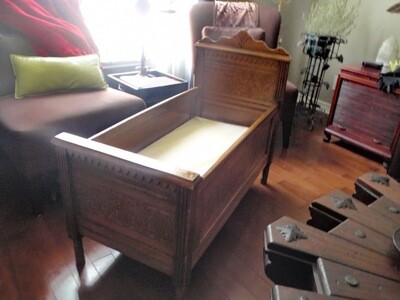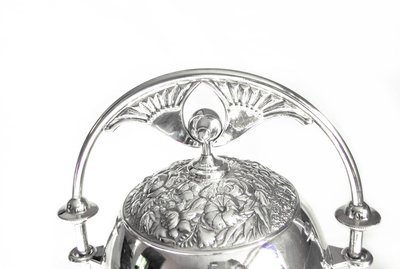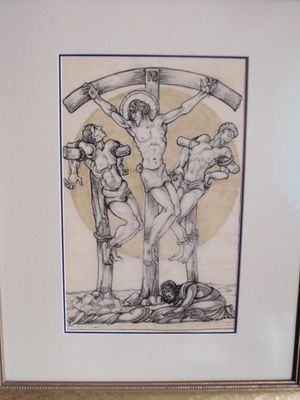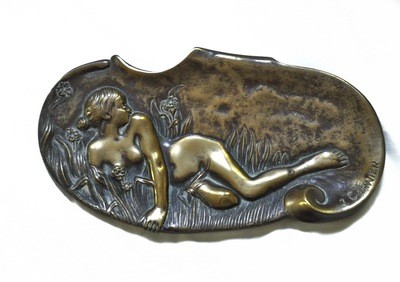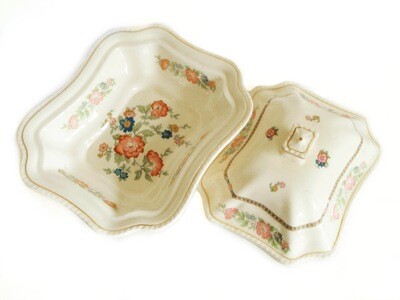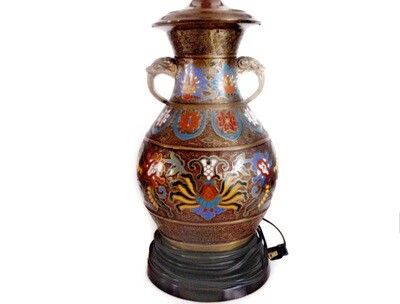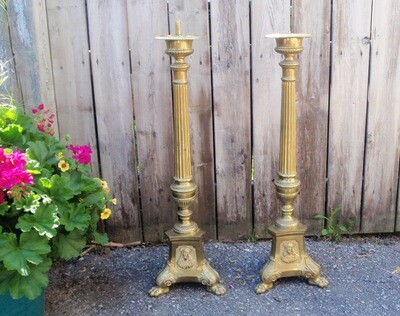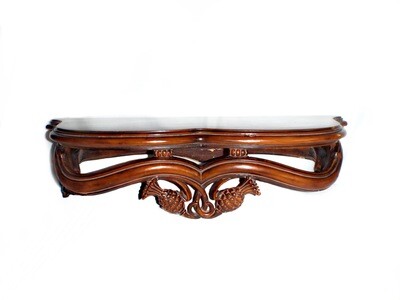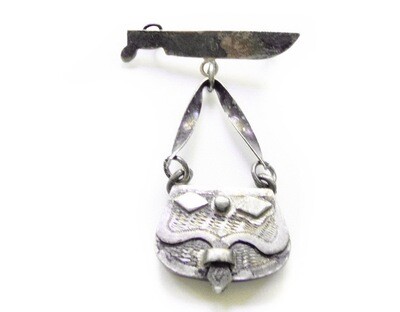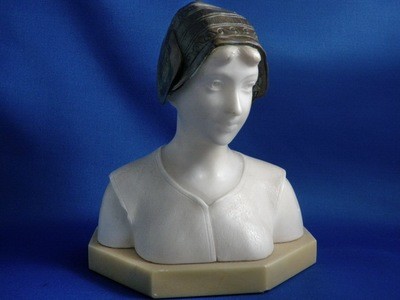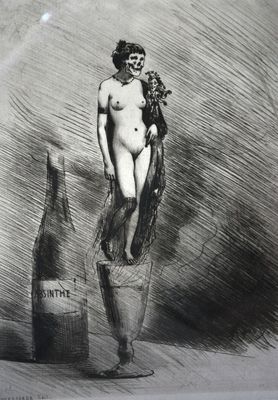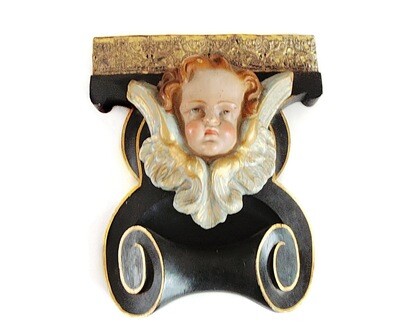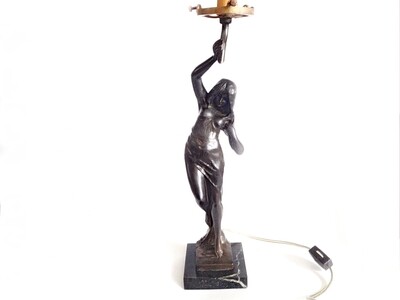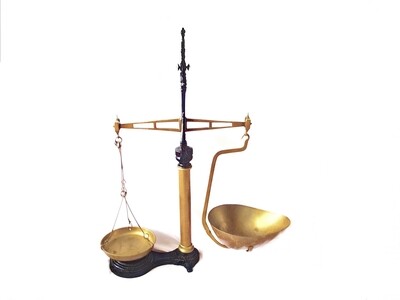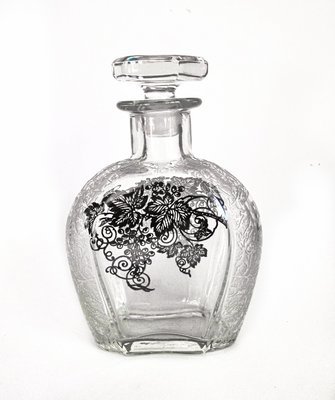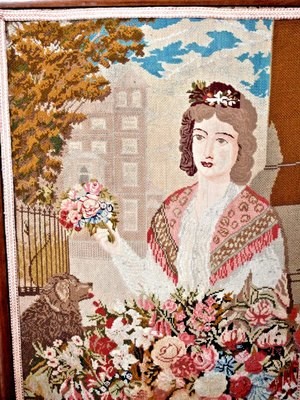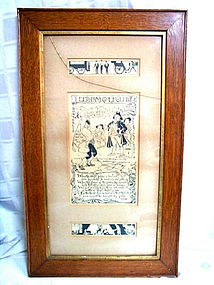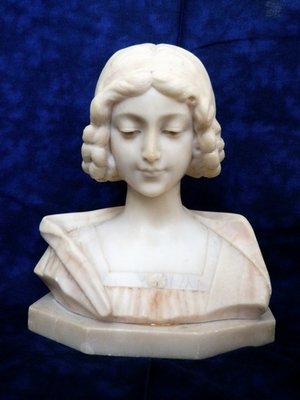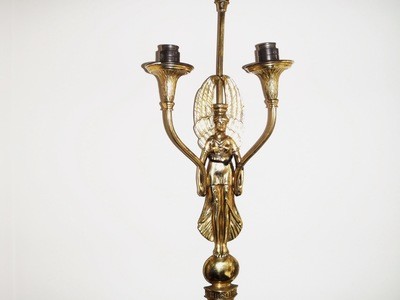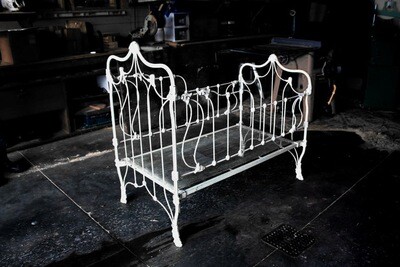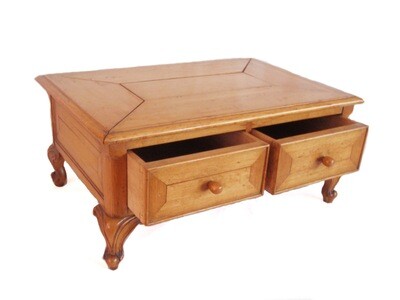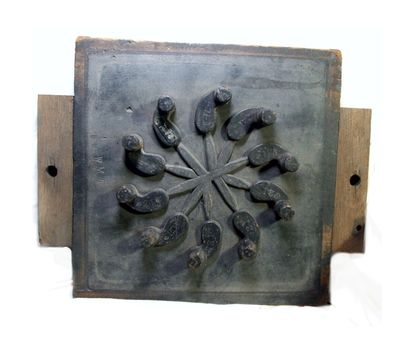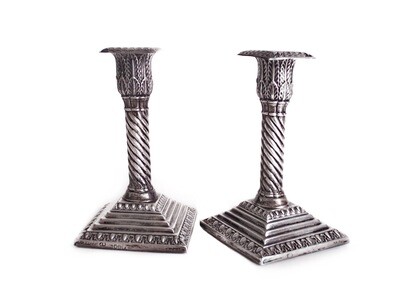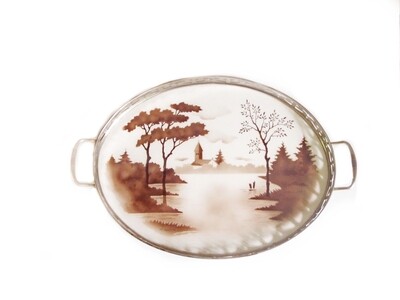
Antique Quebec Primitive Portable Shell Baptism Font
RARE one of a kind, hand made antique 1800's or earlier Quebec primitive portable hand carved shell Baptismal font - fontlet, This striking piece has been hand carved from one piece of hardwood which I believe is either maple or butternut. A stunning and important piece of Christian Baptism tradition most likely used in smaller rural communities were the Priest would come to Baptize babies born in the community for private or community Baptisms. Can be used for fruit & worthy object d'art you want to display like antique paperweights etc.. Movable or portable fontlets go as far back as the 16th century. See fascinating history below! CONDITION: In excellent antique condition with the tops of two of the shell extrusions are off. SIZE APPROX: 23 inches wide (top) bottom 24 1/2 (bottom round) x 12 1/2 inches wide and 4 1/2 inches deep.
Baptismal fonts are an important part of many Christian faith traditions, and a wide variety of styles and shapes are seen in these special vessels. In the Catholic Church, for example, baptismal fonts are often ornate pieces that feature sacrament symbols such as shells or clamshells. The font is a symbol of both tomb and womb; its power is the power of the triumphant cross; and baptism sets the Christian on the path to the life that will never end, the 'eighth day' of eternity where Christ's reign of peace and justice is celebrated
THERE are reasons for having a small font, the most obvious being that it is movable. There is evidence that portable fonts were in use at least as early as the 16th century, when there were conflicting ecclesiastical directives. In 1549 and 1552, the Book of Common Prayer continued the tradition of ceremonial immersion at baptism, while providing for affusion (pouring) instead if the child was weak. But, by 1558, the Calvinists were encouraging baptism by aspersion (sprinkling) or affusion, using a basin placed within the main font.
Queen Elizabeth I subsequently became alarmed at the banishing or destruction of ancient fonts as a result of the Reformation. In 1561, she decreed that fonts were to remain in churches; and, later, in 1564, that basins were not to be used at all, thereby leading to further confusion. She reinforced this in 1571, insisting that every church should have a font, not a basin (“sacer fons, non pelvis”).
The Puritans, however, were inclined to ignore her dictums, and continued to promote small metal basins (a comparatively large number of 16th-century pewter vessels, for example, survive in Leicestershire and Lincolnshire).
In 1645, Parliament passed an ordinance requiring the use of the Westminster Assembly’s Directory of Public Worship. In effect, this ordered the abolition of all fonts (resulting in the destruction of many more beautiful medieval fonts), basins to be used instead. With these basins, baptism by aspersion or affusion was to be conducted. At this time, while Calvinist doctrine favoured the basin, the Book of Common Prayer continued to enjoin ceremonial immersion (or affusion). With the restoration of the monarchy in 1660, the main font once more regained its primacy in the service of baptism.
IT WAS in the 18th and 19th centuries, however, that baptism was elevated to a higher social status, with the ordering of private baptisms by those of position and rank. Private baptismal ceremonies reflecting social status might be viewed with suspicion, however, for they could be said to flout the 1551 Act of Uniformity enacted by Parliament during the reign of Edward VI (subsequently repealed by Queen Mary, but reinstated by Queen Elizabeth I).
The Act states that the curates of every parish shall warn the people “that without like great cause and necessity they procure not their children to be baptised at home in their houses”, before going on to set out the specific conditions under which such a baptism could take place (Book of Common Prayer, “Ministration of Private Baptism of Children in Houses”).
From the beginning of the 18th century, it appears that the aristocracy were wont to bend the rules. These portable fonts, made for private baptism in the hall or private chapel of a great house, were often one-off commissions, and would remain in the house awaiting the arrival of subsequent siblings.
This new market for portable fonts for use in private baptism seems at least partly to account for the spate of miniature fonts produced in the 19th century by the great Staffordshire pottery factories: in particular, Wedgwood, Minton, Spode, Copeland, and Worcester.
Portable fonts were also used in churches, enabling the priest to involve the whole congregation more fully rather than just the chosen few standing around the main font, usually situated at the west end of the nave.
ANOTHER important factor in the production of miniature fonts was a demand for small portable or travelling fonts that could be used at the bedside of an infant succumbing to illness. Before the advent of antibiotics, epidemics of influenza, cholera, typhoid, and typhus in the first half of the 19th century, for instance, claimed the lives of many children; so a miniature font that could be slipped into a pocket or bag became a necessary part of the priest’s armamentarium.
It was for just such a scenario that the Royal Worcester porcelain company produced its travelling fonts in response to outbreaks of contagious disease in the 1830s and ’40s. Minton likewise produced pocket-sized travelling fonts in the 1850s. Sometimes, owing to their diminutive scale, these are referred to (including by manufacturers) as “pocket fonts”. Travelling or pocket fonts generally came with their own leather case or box. {ChurchTime.uk]
Andrea, your store is a wonderful treasure trove and your knowledge and class are of a scholarly collector.
I am a university research professor with an eye for detail. I have never seen any vendor with your level of exquisite scholarship. Just like your fine objets d'art, your descriptions are crafted with masterful finesse; it is such a pleasure reading them and it is also a great learning experience. Thanks again! Patrick
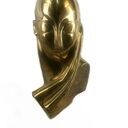



Passion for Antiques

Deco Deva
Proprietor
Downsizing was inevitable and I've done it several times already. This is the big one, and I am still unboxing treasures retrieved from storage after decades.
All pieces are one of a kind handpicked by yours truly over 40 years to add texture, style and story to your authentic style.
My collecting story starts after watching Astaire and Rogers float across a dance floor as a young girl, I have loved art deco design, art, fashion and jewelry. So bold and beautiful, and so different from anything that came before it. Art deco changed social and design sensibilities forever. A lifetime collector of high quality antiques and vintage, I started by making contacts, researching and learning. Picking the best of the best, I live with art deco and vintage decor and used to wear the fashions of the day. To say that I feel in love is an understatement. I reveled in the fact that I was able to reflect my unique style and sensibilities with a marriage of old and new.
Since I was in my teens I have bought what pleases me, what I find beautiful and unique, and the things that speak to me on a creative level. I hope that you can see and feel the passion and love that I feel for antiques and vintage pieces and share with you. You will find art deco, collectible and vintage fine art paintings, original illustrations and magazine covers, home decor, marble, alabaster and metal lamps, nude flapper table lamps, sterling silver decorative accents and tableware for the home and entertaining, designer and estate jewelry and fine vintage watches in my shop.
